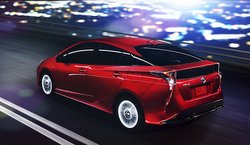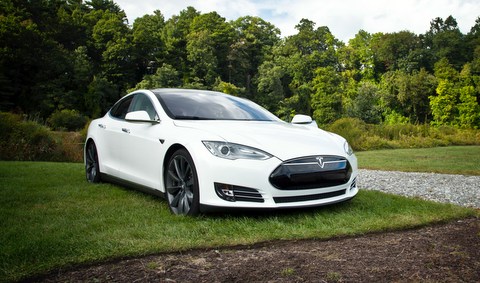Lack of Noise from EVs Is an Issue
Electric vehicles have brought any number of disruptive changes to the automotive industry. Yet one of the more unexpected debates has centered around the noise–or lack thereof–that electric vehicles contribute to American roads.
On one hand, whisper-quiet electric motors could be a welcome relief to most city streets. Just as electric vehicles promise to cut greenhouse gas pollution, they also have the potential to drastically reduce everyday noise pollution.

But however unpleasant the sound of combustion engines may be, this noise is an essential source of safety information for pedestrians and cyclists. Before it comes directly into view, it is often the sound of a vehicle that will signal its presence to individuals on streets, sidewalks and parking lots.
When an electric vehicle is travelling at higher speeds, the sound generated by tires and wind effectively signal its presence. But at slower speeds, around 18 miles per hour or below, they are often undetectable by ear. In these cases, pedestrians and cyclists are less equipped to protect themselves from collision. A 2011 study by the National Highway Traffic Safety Administration (NHTSA) confirms this risk, reporting that hybrid electric vehicles are 35% more likely to be involved in an accident with a pedestrian.
Sounds Will Be Added
This risk is compounded for individuals with vision impairments. In a 2017 report from the National Federation of the Blind, Executive Director for Advocacy and Policy John Pare wrote, “Silent vehicles are essentially stealth vehicles to blind people”. For those who rely on sound to safely navigate the world, the growing number of electric vehicles presents an urgent hazard.

To manage this risk, the Department of Transportation has passed regulations requiring hybrid and electric vehicles to emit a warning sound when travelling below 18.6 miles per hour. The regulation originally required compliance by manufacturers as of September 2019, but this date has been extended to September 2020.
These changes, which most manufacturers are already implementing, are an important step in fostering optimal safety conditions for pedestrians and cyclists. However, nothing is more effective at preventing accidents than individual drivers’ vigilance and preparation. All drivers, and particularly those with electric vehicles, should incorporate these safety practices to help keep everyone safe on the road.
- Obey traffic rules–particularly those that are often
bent, such as stopping for pedestrians at stop signs and obeying the speed
limit in neighborhoods and parking lots. - Make sure that all of your visual signals are working,
including headlights, signals and brake lights. - Frequently check blind spots and allow at least three
feet when passing bicyclists. - Do not assume that a pedestrian or cyclist can hear
you.
Accident Tips
Should an accident occur, first ensure that you and those involved are safe. Seek medical attention if needed. After ensuring the safety of the situation, document the accident by taking the following steps.
- Take notes. It is important to record as many details
about the accident as possible to help ensure that you are working with an
accurate account. - Collect the other party’s information. Whether this is
a driver, pedestrian, cyclist, skateboarder, electric scooterist, (the list
goes on); record their full name, address and phone number. If they are in a
vehicle, record their insurance company and policy, driver’s license number and
license plate number. - Take photos. Use a camera or your phone to take
pictures relevant to the accident scene, including all visible damage,
injuries, debris caused by the accident and the location of the vehicle(s)
involved.
Whether you are a pedestrian or in a vehicle, and whether the vehicle has an electric motor or combustion engine, these steps will help ensure that any investigation into an accident is conducted in a fair and timely manner. Should legal action be taken, both sides will benefit from an accurate record of the facts.

This article is very good; thanks for sharing good information